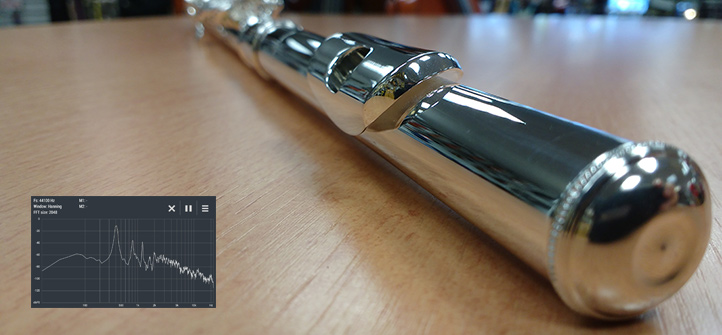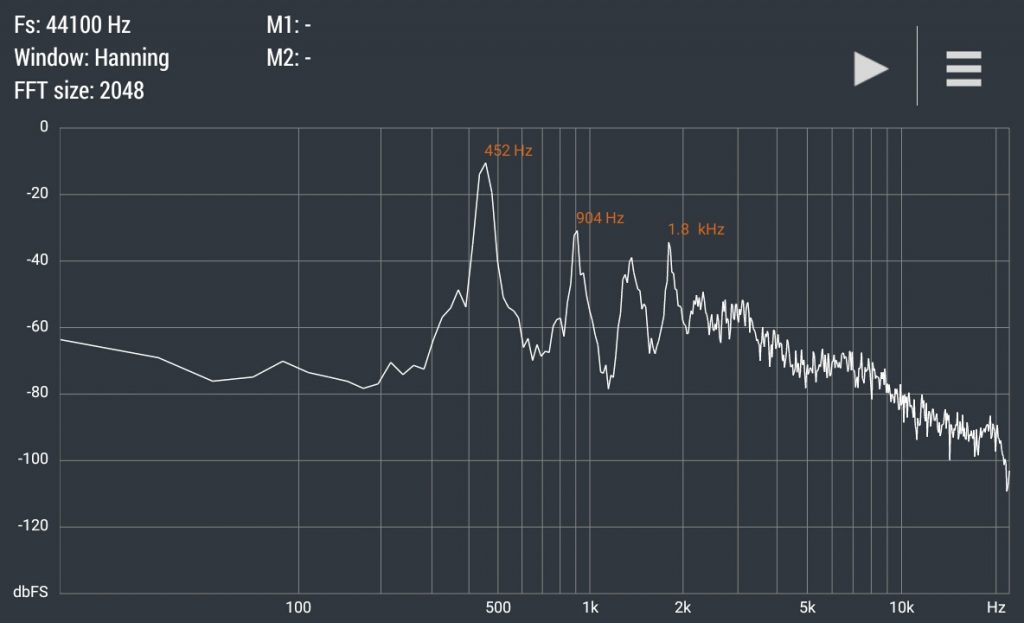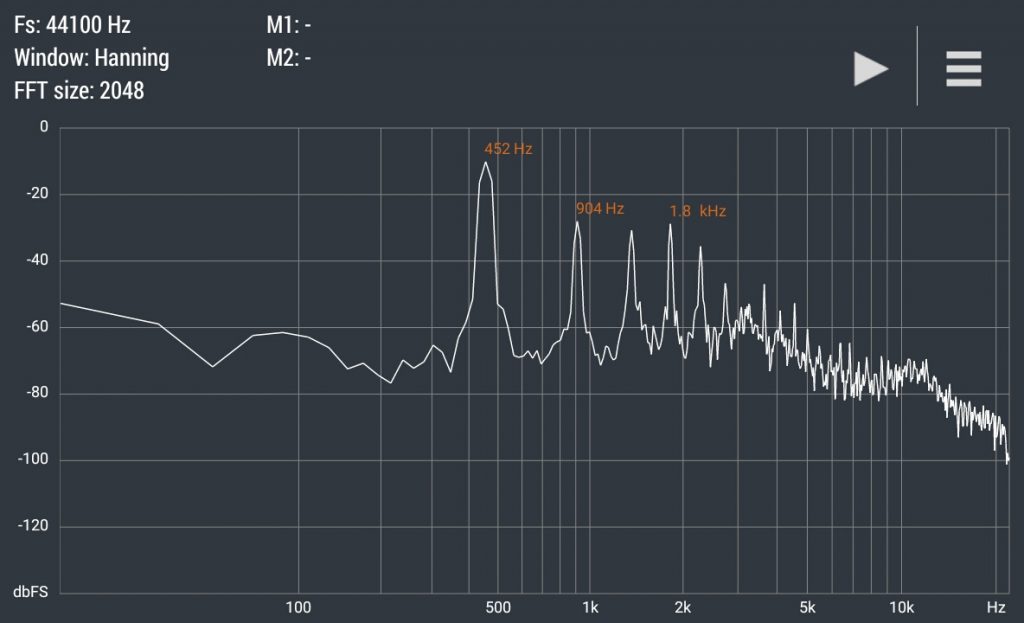
This month we explore the use of silver in flutes. As you upgrade from student to professional the material of the flute changes from nickel to silver (and sometimes beyond that to gold or platinum!) Obviously this increases the price, but is it worth it?
Different metals have different resonance, which changes the harmonic overtones of the notes played. Let’s put theory into action and look at some flutes.
In action today we have a couple of Yamaha flutes: a nickel-body 212 and a silver-body 412. With the aid of a handy little phone app we can look at the whole spectrum of sound these flutes produce.
Firstly the nickel YFL-212

Now the silver YFL-412

As you can see the peaks on the silver flute are narrower peaks, giving the resulting sound more focus. The other main difference is a peak around 1200Hz (the second harmonic), which is almost as much as the octave, this means the silver gives a stronger overtone than the nickel, adding to the richness of the sound. The same is true for the other overtones, with much more prominent peaks shown at the higher harmonics.
With more sophisticated technology you might find these stronger overtones continue up the harmonic series, but even from our rudimentary findings it’s clear that silver flutes resonate quite differently from nickel ones.
Have you noticed a difference between the materials? Or tried a gold flute? Let us know in the comments.





